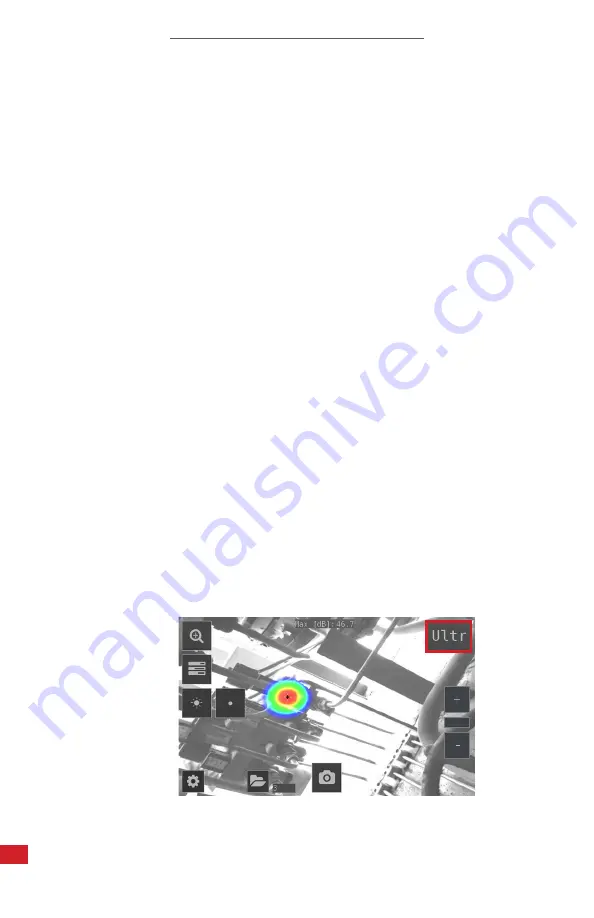
SOUND DETECTAI USER MANUAL
42
8-8 Real-time Acoustic Analysis
Real-time analysis results are shown at the top of the user interface. The level
in decibels of sound arriving from the strongest source (shown with a crosshair)
is presented. The real-time analysis also provides additional information about
problems related to the specific application.
Generally, the device is used for either leak detection (locating and estimating
the size of compressed air leaks) or partial discharge detection (locating and
analyzing partial discharges in power grids).
8-8-1 Air Leak Detection
The device must be set to Air Mode to detect compressed air leaks (see
Section
8-4 Application Modes
)
The device detects compressed air leaks based on the sound emitted by the
leak. When a leak is detected, the device will estimate the size of the leak. The
estimate relies on the distance and environment settings input by the user.
The device can estimate the cost of leaks.
8-8-1-1 Filters for Air Leaks
Background noise can disrupt acoustic inspections. The different filters available
on the device filter out background noise in order to concentrate on the ultrasonic
frequencies where the sound of a leak is typically stronger than noise.
Use the High and Ultra filters to block out audible background noise. The SLM
filter emphasizes the sound from leaks by further filtering out many typical
industrial noise sources. Users should test inspection areas with the different
available filters to see which filter gives the best results.
Change the filer type by using the touchscreen to tap the filter button in the top
right corner.
SELECT THE APPROPRIATE AIR MODE FILTER AND DISTANCE BEFORE
CAPTURING MEDIA OR PERFORMING ACOUSTIC ANALYSIS.
5.0m
















































